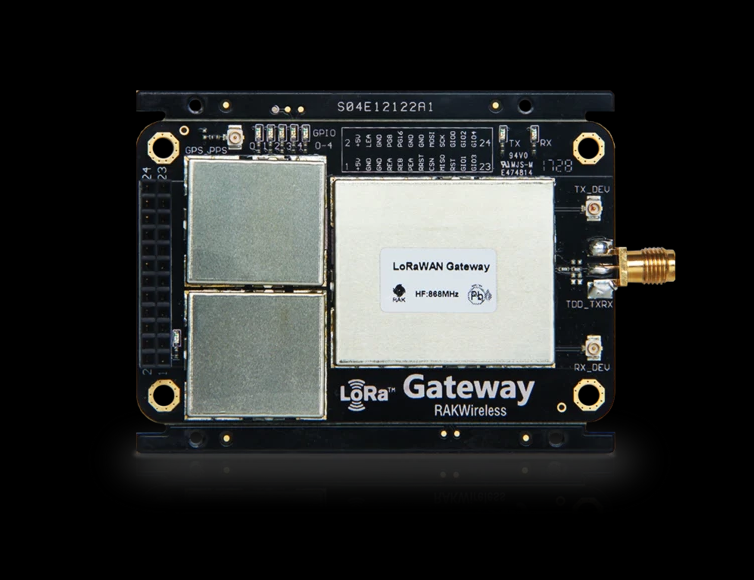The LoRaWAN is set up cloud-ready and can be integrated with any of the various cloud platforms with minimum effort. The LoRa Gateway targets key IoT requirements such as bi-directional communication, end-to-end security, mobility, and localization services. The LoRa sensors and gateways deliver high performance with unparalleled design flexibility. The LoRaWAN protocol can be used for the implementation of the IoT (Internet of Things) concept. Currently, most of the information regarding the scalability of the gateway is commercial and deals with the best-case scenario. For this purpose we need realistic models, enabling the proper assessment of the performance level.
The modern concept of IoT entails a large number of nodes distributed over a wide geographical area, therefore forming a high density, large-scale architecture. IoT is important to determine the number of collisions so that we can assess network performance. The LoRaWAN Gateway is based on the SX1301 baseband concentrator. The gateway could be qualified as an individual channel as it uses the SX1272/76, much like an end-device would do. In the case of LoRa transmission robustness, we enhance the LoRa transmission with CSMA feature and add Quality of Service guarantees with regards to radio time limitations. All these networks virtually are an interface between the industrial environment and the central server area where data is collected, processed, and stored.
In this type of LoRa Gateway keeps the cost of the gateway low and can satisfy small to medium size deployment scenario for ad-hoc application cases in various private usages, farming, application-specific telemetry systems, agriculture, infrastructure surveillance, note that more than one gateway can be deployed to serve several channel settings. For the latest development, to large-scale deployment with a large number of end customers from various organizations with their own and various requirements regarding data management, confidentiality and security.

Nowadays, this modern technology that permits or private or public single- or multi-tenant networks to connect multiple applications in the same space coexisting to enable new IoT, M2M, smart city, sensor-network, and industrial automation applications. Get support from a star topography, the sensors communicate with gateways in the LoRa network. According to this type of gateways can then act as a transparent bridge relaying messages between end-devices and a central network server on the backend, which is ideal for public nationwide deployments, where all LoRa Gateway is linked to the network server via standard IP connections as well as for highly controlled private rollouts where security and control are essential.
LoRa is very low power but is only suitable for very small amounts of data. Now creating the ideal for sensors such as weather monitoring, air quality, etc. Now, the internet of things LoRa Raspberry Pi HAT permits you to create an inexpensive and Best LoRaWAN Gateway, compatible with the things network, in conjunction with a Raspberry Pi or other single board computers. Now, we have proposed a series of solutions for reducing the number of collisions and increasing the capacity of the communication channel.
Easily deploy good quality gateways with minimal cost
The modern concept of IoT entails a large number of nodes distributed over a wide geographical area, therefore forming a high density, large-scale architecture. IoT is important to determine the number of collisions so that we can assess network performance. The LoRaWAN Gateway is based on the SX1301 baseband concentrator. The gateway could be qualified as an individual channel as it uses the SX1272/76, much like an end-device would do. In the case of LoRa transmission robustness, we enhance the LoRa transmission with CSMA feature and add Quality of Service guarantees with regards to radio time limitations. All these networks virtually are an interface between the industrial environment and the central server area where data is collected, processed, and stored.
In this type of LoRa Gateway keeps the cost of the gateway low and can satisfy small to medium size deployment scenario for ad-hoc application cases in various private usages, farming, application-specific telemetry systems, agriculture, infrastructure surveillance, note that more than one gateway can be deployed to serve several channel settings. For the latest development, to large-scale deployment with a large number of end customers from various organizations with their own and various requirements regarding data management, confidentiality and security.

New technologies have emerged as LoRa Gateway
Nowadays, this modern technology that permits or private or public single- or multi-tenant networks to connect multiple applications in the same space coexisting to enable new IoT, M2M, smart city, sensor-network, and industrial automation applications. Get support from a star topography, the sensors communicate with gateways in the LoRa network. According to this type of gateways can then act as a transparent bridge relaying messages between end-devices and a central network server on the backend, which is ideal for public nationwide deployments, where all LoRa Gateway is linked to the network server via standard IP connections as well as for highly controlled private rollouts where security and control are essential.
LoRa is very low power but is only suitable for very small amounts of data. Now creating the ideal for sensors such as weather monitoring, air quality, etc. Now, the internet of things LoRa Raspberry Pi HAT permits you to create an inexpensive and Best LoRaWAN Gateway, compatible with the things network, in conjunction with a Raspberry Pi or other single board computers. Now, we have proposed a series of solutions for reducing the number of collisions and increasing the capacity of the communication channel.










0 Comments